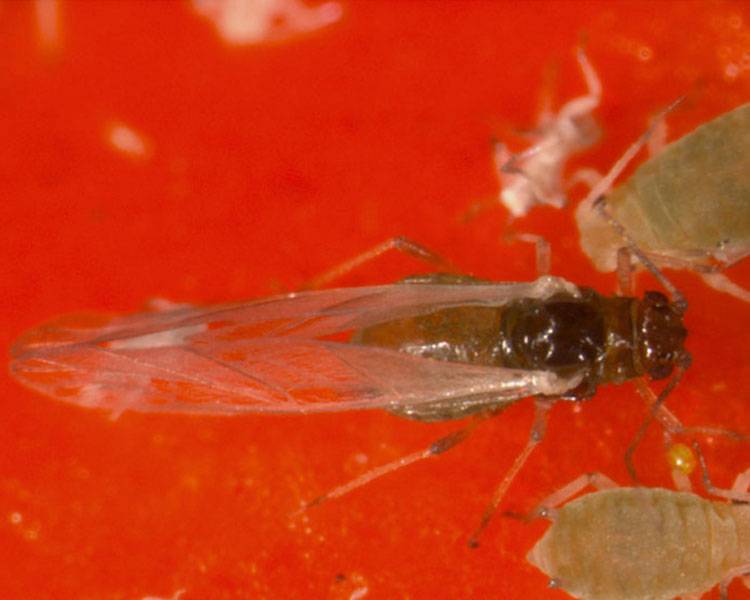Pomegranate
Aphids

Aphids
Aphis punicae Passerini

Aphids
Aphis punicae Passerini
Aphid Infestation on Pomegranate: Identification, Damage, and Management
Introduction
Aphids are small, soft-bodied insects that feed on pomegranate plants, causing leaf curling, yellowing, and fruit damage. They reproduce rapidly and thrive under favorable climatic conditions, leading to significant infestations.
Identification
- Size: 1-2 mm
- Color: Yellowish-green, green, or grey-green
- Distinct Features:
- Siphunculi (tube-like structures): Pale green to brown with darker tips
- Two forms:
- Winged aphids
- Wingless aphids
- Found along mid-ribs and leaf margins
Mode of Feeding & Symptoms of Infestation
- Aphids suck plant sap from leaves, flowers, and fruits
- Damage symptoms:
- Leaves curl up, turn yellow, and fall off
- Fruit quality declines due to feeding
- Aphid presence leads to honeydew secretion, encouraging sooty mold growth
Life Cycle & Seasonal Incidence
- Winter: Sexual forms mate, and females lay eggs in leaf axils
- Spring: Eggs hatch, and aphids reproduce by viviparous parthenogenesis (live birth)
- Population peaks in spring and autumn
- Optimal conditions:
- Temperature range: 22.5–25ºC
- Development threshold: 11.8ºC
- Each female produces about 30 offspring under ideal conditions
Management Strategies
1. Cultural Control
- Remove heavily infested leaves to reduce population buildup
- Encourage natural predators like ladybugs and lacewings
2. Mechanical Control
- Use water sprays to dislodge aphids from plants
3. Biological Control
- Introduce predatory insects like Aphidius colemani and Coccinellids (ladybugs)
- Fungal pathogens like Beauveria bassiana and Verticillium lecanii help control aphid populations
4. Chemical Control
- Apply neem oil (3-5 ml/liter water) as an organic solution
- Use systemic insecticides like Imidacloprid 17.8 SL (0.005%) or Thiamethoxam 25 WG (0.01%) in severe infestations
Conclusion
Aphids are a major pest in pomegranate cultivation, particularly in spring and autumn. Integrated pest management (IPM) combining cultural, mechanical, biological, and chemical approaches helps in effectively controlling aphid populations while minimizing pesticide use.
